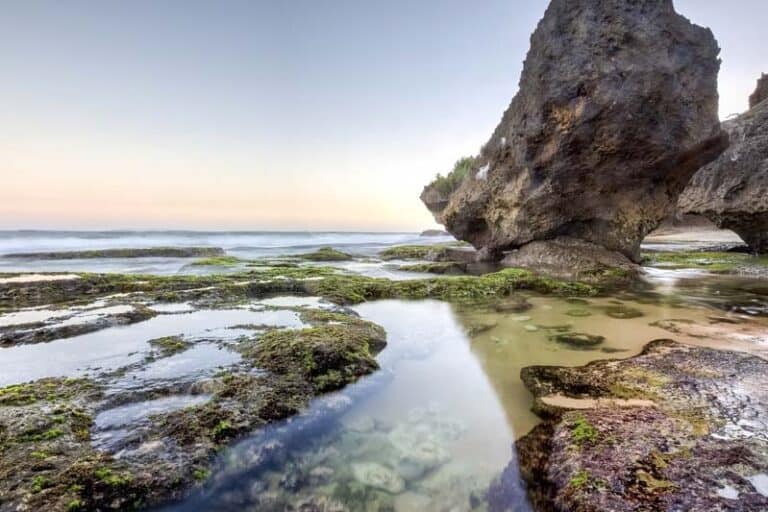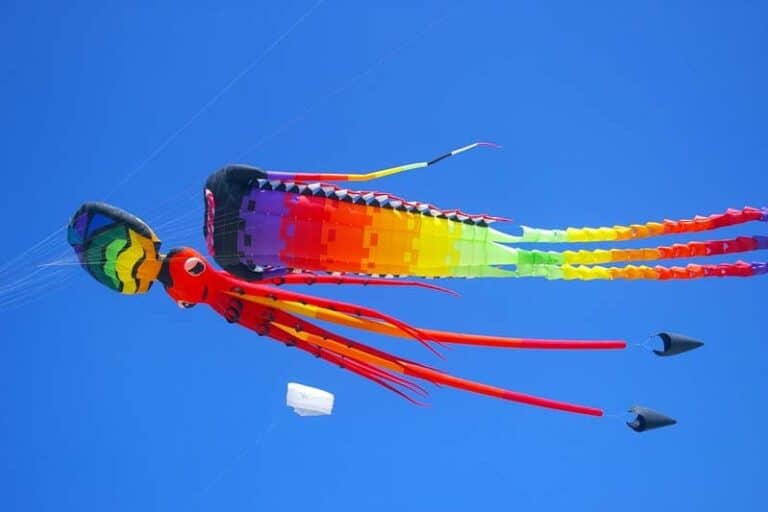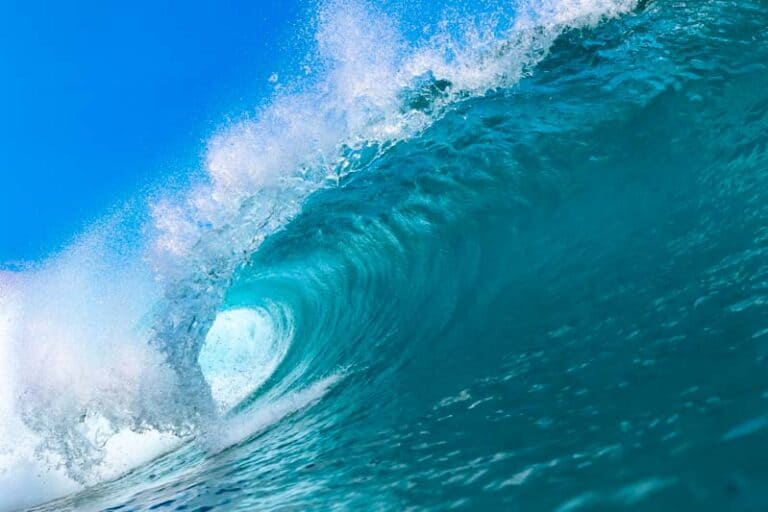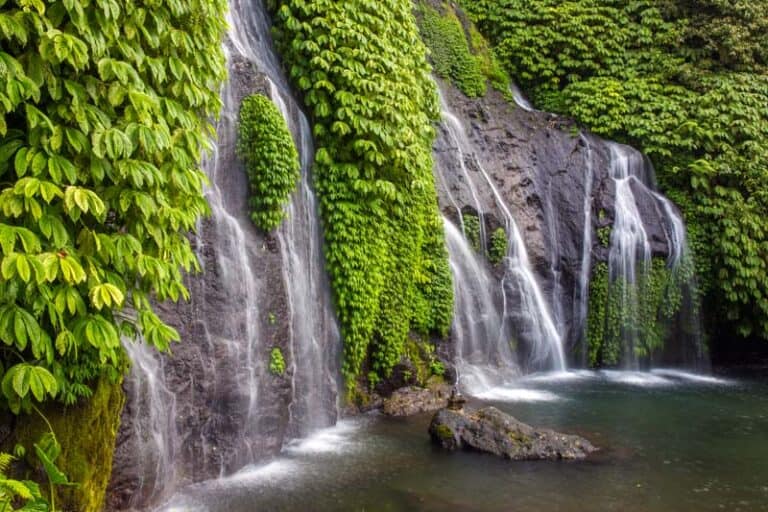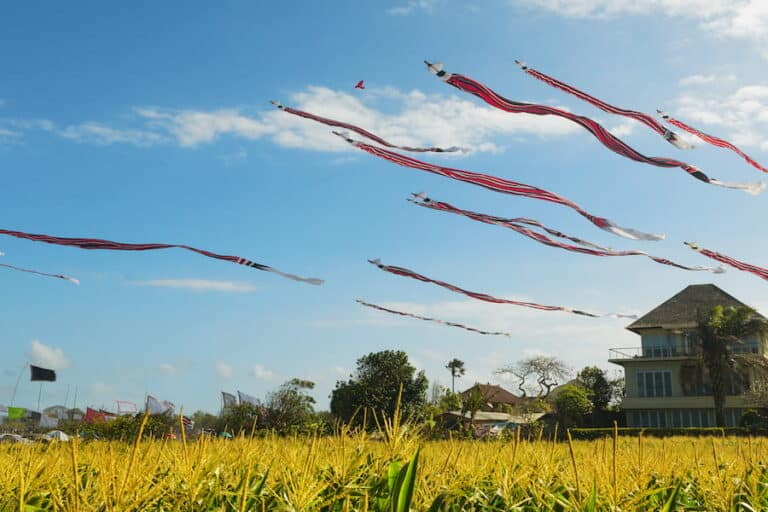If Bunaken is located at the northern tip of Sulawesi Island, Lembeh is an island off the northeast coast of Sulawesi Island, Indonesia. It is a 25 km (15.5 miles) long and 2 km (1.24 miles) wide island, separated from the mainland by a narrow strait, and featuring the unique and rare marine creatures living on its black sandy muck diving slopes. Therefore, diving in Lembeh Strait is something you should do when visiting this island.
To reach Lembeh Island, you can fly to Manado from many other cities in Indonesia and drive to the port of Bitung, which will connect you to Lembeh Island by boat. If you are staying in the resorts in Lembeh, most of them can arrange the airport transfer for you. You need to pay a small entrance fee to the Lembeh Strait Marine Park, which can be arranged with your dive operators or resorts.
Overview of Lembeh Island and Lembeh Strait
Among many other dive sites in Indonesia, Lembeh Strait is rewarded as the “critter capital of the world.” To many underwater photography enthusiasts, diving in Lembeh is like playing in the underwater playground with many unexpected surprises. Since its discovery in the early 1990s, Lembeh Strait, which is only 26 km (16 miles) long and 1.2km (.75 mile) wide, offers no less than 60 dive spots to explore.
Diving in Lembeh Strait
Most dives will be boat dives starting in deeper water than working your way to a shallower sandy slope. Some dive sites are also beach-entry, making it practical if you stay in one of the beachfront dive resorts
With the warm water temperature between 24 to 30 Celcius (75 to 86 Fahrenheit) and nice weather, diving in Lembeh Strait is feasible throughout the year with fewer options from January to February on the rainy season; October to March is said to be the warmest times, while it drops during July to August.
Visibility varies between 4 to 20 meters (13 to 66 ft.), not too clear but logical since the floor is sandy, and divers would need a good neutral buoyancy to enjoy the dives without stirring the sand. But if you want more focus on the visibility, October to December are said to be the clearest periods for the best visibility.
Dive sites in Lembeh Strait Indonesia
Diving in Lembeh Strait, you will find wrecks and reef areas as well besides the sandy slopes. Here are some of the notable dive sites in Lembeh Strait, Indonesia.
Hairball
This iconic dive site in Lembeh Strait is famous with its sandy slope up to 30m (98 ft.) with scattered reefs and other attributes like logs, bottles, rocks – a true muck diving site providing a home for the most unusual creatures like frogfish, Ambon scorpionfish, octopus, snake eels, devilfish, seahorses, dragonettes, and even the flamboyant cuttlefish.
Jahir
Jahir is one of the newly discovered dive sites in Lembeh Strait, whose name is taken from a local diver who first found this spot. The coral patches start from 5m (16 ft.), and a black sandy slope continues down up to 28m (92 ft.), making it suitable for decompression while enjoying to see the scorpionfish, painted frogfish, seahorses, purple heart urchin’s, Zebra crab, Ambon scorpionfish, and eels. Nighttime gives an excellent opportunity to see a strange Stargazer.
Coby a Crab
This site offers a wall dropping down from 3m to 27m (9 to 89 ft.) , where the sandy bottom is covered in rubbles and sands. This site is well known for mandarin fish and the rare rhinopias, and you can also expect to see the gigantic frogfish, blue-ringed octopus, scarce scorpionfish, gobies, mototi, and some interesting nudibranchs.
Police Pier
This site name is taken from the nearby pier of the police station that monitors Lembeh Strait. The gradual sandy slope is filled with rubble, soft corals, and bright orange sponges, including a small muck area where you might encounter the thorny seahorses, Banggai cardinalfish, spotted barramundi cod, painted frogfish, bigfin squid, harlequin shrimp, ghost pipefish, scorpionfishes, and lionfishes.
Nudi Falls
This is one of the dive sites you should do when diving in Lembeh Strait, which features a colorful sheer mini wall dropping from 1m to 20m, with rocky slope, sandy slope, and main channel of rubble with coral patches at 28m (92 ft.). In this site, you might spot the colorful cowries, rhinopias scorpionfish, pygmy seahorses on the gorgonian fans, anemonefish, Banggai cardinalfish, giant frogfish, comet fish, and nudibranchs.
Nudie Retreat
This is one of the most visited site when diving in Lembeh Strait, due to the fact of the pygmy seahorses and sea moths inhibiting the coral bowl. This small protected cove starts with reef slope at 3m (9.8 ft.) turning into a sandy slope and encrusted boulderers down below with two mini walls stretching out to either side. As its name, a wide variety of nudibranchs can be found here, along with cockatoo wasp fish, a pair of Pegasus sea moths, frogfish, coral catshark, etc.
Aer Perang 1,2,3
This is one of the best dive sites in Lembeh Strait for night dives. A World War II warship blasted through the rocks to reach the freshwater, therefore formed this dive site, which was named “War Water” in the Indonesian language. It is a relatively shallow sandy slope dotted with coral patches where you can find the commensal shrimp, crabs, snake eels, fingered dragonettes, seahorses, nudibranchs, demon stinger, hairy frogfishes, bobbit worms, ghost pipefish, and rare species of octopus. At night, you can see the stargazers and bubble shells as well.

